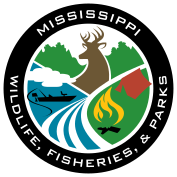

The Mississippi State Waterfowl Stamp plays a vital role in both hunting and habitat conservation. Established by the Mississippi Legislature in 1976, the stamp ensures that all revenue supports projects for protecting and propagating migratory waterfowl and for the development, restoration, maintenance, and preservation of wetlands.

Each year, Mississippi Waterfowl Stamp sales generate over $500,000 in dedicated conservation funding.
Your Stamp Supports:

When you buy a Mississippi Waterfowl Stamp, you’re not just buying a license requirement — you’re investing in the future of hunting and conservation in our state.
Your purchase helps maintain the places where we hunt, fish, and connect with nature — from the managed wetlands of our WMAs to the breeding grounds of the Prairie Pothole Region.
The next time you’re sitting in a duck blind, watching the sunrise over a wetland, know that your stamp helped make that moment possible.

The Harvest Information Program (HIP) is an essential tool for understanding migratory bird harvests across the country. All licensed waterfowl (and other migratory game bird) hunters are required to participate each year for each state they choose to hunt.
When hunters register for HIP, they answer a few short questions about the types and numbers of migratory birds they harvested the previous season. These responses help biologists gather accurate data on harvest trends and hunter activity.
HIP Data Helps MDWFP:
By completing HIP when you buy your license, you help ensure that Mississippi’s waterfowl management decisions are based on strong, science-driven data.
Mississippi’s Migratory Waterfowl Stamp was first introduced in 1976 with a $2 fee for both residents and non-residents. Over the years, as conservation efforts expanded, the cost was gradually adjusted to meet program needs. From the beginning, every dollar collected has been invested in work that sustains both wildlife and outdoor recreation opportunities across the state.
Mississippi’s waterfowl stamp is more than a collectible—it’s a cornerstone of wetland conservation and hunting opportunity.